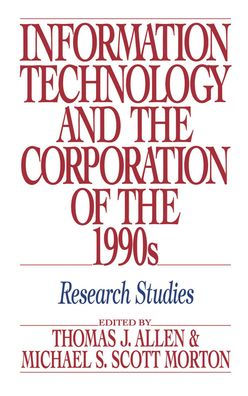5
1
9780195068061


Information Technology and the Corporation of the 1990s: Research Studies / Edition 1 available in Hardcover

Information Technology and the Corporation of the 1990s: Research Studies / Edition 1
- ISBN-10:
- 0195068068
- ISBN-13:
- 9780195068061
- Pub. Date:
- 01/06/1994
- Publisher:
- Oxford University Press
- ISBN-10:
- 0195068068
- ISBN-13:
- 9780195068061
- Pub. Date:
- 01/06/1994
- Publisher:
- Oxford University Press
270.0
In Stock

Product Details
| ISBN-13: | 9780195068061 |
|---|---|
| Publisher: | Oxford University Press |
| Publication date: | 01/06/1994 |
| Edition description: | New Edition |
| Pages: | 544 |
| Product dimensions: | 6.50(w) x 9.56(h) x 1.54(d) |
| Lexile: | 1440L (what's this?) |
About the Author
From the B&N Reads Blog
